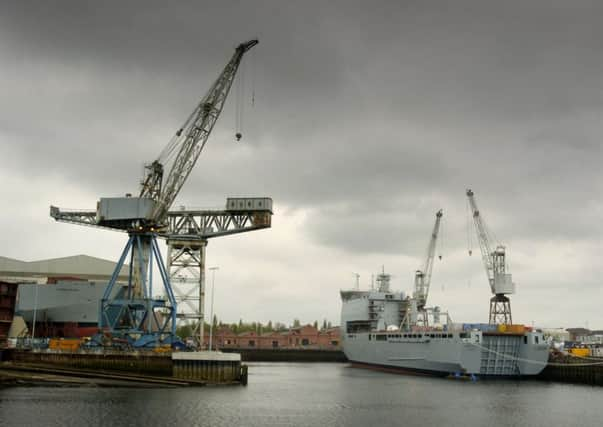Horse trade over Trident needed to save shipyards


Its continuing existence in the short-to-medium term would depend almost entirely on a cooperative relationship with the rest of the UK (rUK). This is because on its own it is unlikely an independent Scotland would have enough orders to maintain all but a skeleton industry, so to keep the present shipbuilding infrastructure would require large government subsidies.
The good news is that the Scottish shipbuilding industry, when it comes to warship construction, is now the most efficient and cost effective in Britain. This was recognised by the UK Government in its decision to concentrate all Type 26 Frigates in the west of Scotland, and shutting down production in England. In that sense, even after independence there would be an economic imperative that these ships, which would be vital to the continuing existence of any shipbuilding industry in Scotland, continue to be built on the Clyde.
Advertisement
Hide AdAdvertisement
Hide AdIt is difficult to imagine that a rUK government would build warships on the Clyde unless Scotland had integrated smoothly and easily into Nato, and unless there was something in return for rUK industry.
The first point means that for all the bluster about forcing the speedy removal of Trident, for Scotland to maintain a shipbuilding industry it will have to be accommodating on the UK’s nuclear weapons. Scotland will have to allow the rUK to keep the weapons in Faslane/Coulport until the rUK has decided what to do with them. Beyond that, it is likely a joint procurement plan would have to be put in place on warships built for Scotland as well as those for the rUK.
In essence, it would be a cooperative effort, with warship hulls and engines being built on the Clyde, but the expensive weapons systems and most high technology equipment being produced in the rUK. Thus new Scottish warships would have to provide contracts for the rUK as well. As the White Paper released by the Scottish Government allows for the construction of warships, such an arrangement is possible. The future, at least of warship building, depends on cooperation.
• Phillips O’Brien is director of the Scottish Centre for War Studies at University of Glasgow.
SEE ALSO